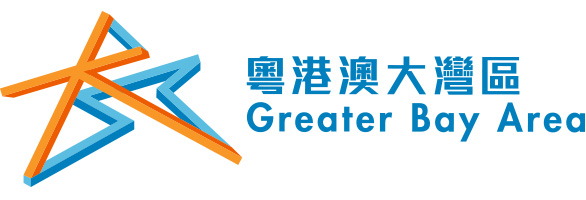Hong Kong and the Mainland are closely connected. With well-developed cross-boundary transportation networks and cross-boundary facilities, there are frequent contacts between the two places. Border via land crossings include Lo Wu, Lok Ma Chau Spur Line, Hung Hom, Shenzhen Bay Port, Lok Ma Chau (Huanggang), Sha Tau Kok, Man Kam To, West Kowloon Station and Hong Kong-Zhuhai-Macao Bridge (HZMB) Hong Kong Port.
The Hong Kong Section of the Guangzhou-Shenzhen-Hong Kong Express Rail Link (XRL) connects with the national high-speed rail network and greatly shorten the traveling time between Hong Kong and Shenzhen, Guangzhou, and other cities in the PRD. It consolidates Hong Kong's position as a regional transport hub. The average daily patronage was about 40 000 in the first half of 2023, with the highest number of over 90 000.
Since its commissioning in October 2018, HZMB has brought enormous opportunities for the connectivity within the Greater Bay Area and its overall development. The governments of Guangdong, Hong Kong and Macao have been working closely to take forward various new cross-boundary transport measures having regard to the capacity of relevant boundary control points and the respective connecting roads with a view to increasing the number of vehicles using HZMB in a gradual and orderly manner, including the “Northbound Travel for Hong Kong Vehicles” (the Scheme) which has been implemented since 1 July 2023. Eligible Hong Kong private cars can travel between Guangdong and Hong Kong via the HZMB without the need of obtaining regular quota, thereby providing a convenient way for Hong Kong citizens to self-drive to Guangdong for business, visiting families or sight-seeing on a short-term basis; and these northbound vehicles can also have the customs guarantee-free arrangement.
The Liantang/Heung Yuen Wai Boundary Control Point (LT/HYW BCP) , the seventh land boundary crossing between Hong Kong and Shenzhen with direct access facilities for both passengers and vehicles, is one of the key infrastructure to strengthen the cross-boundary transport connectivity within the Greater Bay Area, which can provide Hong Kong with more room for development, foster the flow of people and goods, and promote economic development and regional co-operation under the "one-hour living circle" in the Greater Bay Area. The Hong Kong and Guangdong governments have agreed to issue quotas of 2 000 and 200 for Hong Kong and Mainland cross-boundary private cars respectively for this BCP.
The Hong Kong Section of the XRL, HZMB, and LT/HYW BCP will further enhance the capacity of Hong Kong boundary crossing facilities in meeting the ever increasing cross-boundary passenger traffic. Together with transport infrastructure connecting both sides of the Pearl River, such as the Nansha Bridge and Shenzhen-Zhongshan Bridge, they will further improve transport connectivity within the Greater Bay Area and create favourable conditions for attracting Mainland and overseas talents to the Greater Bay Area.
The Hong Kong Section of the XRL
- Opened in September 2018
- Connects with the 40 000-km National High Speed Rail Network
- Direct train service to 68 Mainland destinations (as of July 2023)
- Shortest traveling time for trains departing from the West Kowloon Station:
- about 14 minutes to Futian
- about 18 minutes to Shenzhenbei
- about 47 minutes to Guangzhounan
- about 1.5 hours to Guangzhoudong
HZMB
- Opened in October 2018
- Spans from Hong Kong port to Zhuhai and Macao with a total length of 41.6 km. Together with the 13.4 km-long Zhuhai Link Road, the total length is 55 km. It is the longest bridge-cum-tunnel sea-crossing in the world
- Reduces the travelling time between the Kwai Tsing Container Terminals and Zhuhai from 3.5 hours or so to about 75 minutes
- Reduces the travelling time between the Hong Kong International Airport and Zhuhai from 4 hours or so to about 45 minutes
- Incorporates the western side of the Pearl River Delta into a reachable three-hour commuting radius of Hong Kong
LT/HYW BCP
- Opened in August 2020
- The seventh land crossing between Hong Kong and Shenzhen boundary
- Equipped with direct access facilities for both passengers and vehicles
- Reduces the average travelling time between Tai Po of Hong Kong and Longgang of Shenzhen from currently about 53 minutes to about 31 minutes
- Daily handling capacity estimated at 17 850 vehicle trips and 30 000 passenger trips
- Heung Yuen Wai Highway, the connecting road linking the BCP with the Fanling Highway, was opened in May 2019
Nansha Bridge
- Opened in April 2019
- 13 km long; the widest steel box girder bridge in the world
- An important expressway across the Pearl River
- Shortens the distance between Dongguan and Panyu District by at least 10 km
Shenzhen-Zhongshan Bridge
- Opened in June 2024
- 24 km long; consisting of a cluster of infrastructure, including a sea-crossing bridge, a subsea tunnel, artificial islands and an underground interchange
- Connects Shenzhen, Zhongshan, and Nansha District of Guangzhou
- Four lanes in each direction with a speed of 100 km/h
- The only direct expressway connecting Shenzhen, Dongguan and Huizhou with Zhuihai, Zhongshan and Jiangmen
- Reduces the travelling time between Shenzhen and Zhongshan from currently 2 hours to 30 minutes
